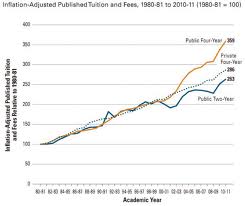 The last month or so has been incredibly heady and hectic. I’ve been working with a sub-committee of the Occupy Wall Street movement; this group has been focusing on student debt, which is set to top off this year at around $1 trillion, more than cumulative credit card debt. It’s been exhilarating working with the Occupy Student Debt Campaign. In literally a matter of weeks, our small group of students, ex-students, and faculty members drafted a series of pledges of debt refusal using the incredibly creative techniques of horizontal organizing pioneered by the Occupy movement.
The last month or so has been incredibly heady and hectic. I’ve been working with a sub-committee of the Occupy Wall Street movement; this group has been focusing on student debt, which is set to top off this year at around $1 trillion, more than cumulative credit card debt. It’s been exhilarating working with the Occupy Student Debt Campaign. In literally a matter of weeks, our small group of students, ex-students, and faculty members drafted a series of pledges of debt refusal using the incredibly creative techniques of horizontal organizing pioneered by the Occupy movement.
These pledges focus on four related demands: forgiveness for current student debtors; free federally funded public higher education; fiscal transparency for private universities; and interest-free student loans.
Taken together, these demands amount to a structural transformation of American higher education, a change that would no doubt also have a strong impact globally given the prominence of the U.S. model of higher education today. 
In addition to the debtors’ pledge, there is also a faculty pledge of support for debtors, and a pledge of ex-debtors to support current debtors. The former is particularly important, in my opinion, since the spiraling cost of the institutions at which faculty members like myself teach is linked to the student debt racket (although I should add that faculty members see little of this increasing tuition in their paychecks since most of this money has gone to adding administrators).
Last Monday, we launched the Occupy Student Debt Campaign at Zuccotti Park. Although the park is a depressing place in comparison to the vibrant spot it was before city authorities cracked down on OWS, our launch nonetheless brought a large group of protesters to the site and suggested that the Occupy movement is capable of transforming itself in vibrant ways despite the clamp-down on specific sites.
 Andrew Ross, who has been a key figure in the group, explained the rationale behind the campaign, talking about how banks, backstopped by the U.S. government, make exorbitant profits from student debt, and how students and ex-students get caught in a trap from which there literally is no exit – since student debtors cannot escape their debt by declaring bankruptcy, since their debt follows them for life, and since their extended families can often inherit their debt if they die before paying it off. Then a student debtor named Pam Brown read the debtors’ pledge of refusal. I then read the faculty pledge of support. This was followed by some wonderful guerrilla theater, with a group of graduates being given huge debt burdens at graduation, followed by the arrival of a large check from the federal government offering free public higher education, after which the graduates throw off the chains of debt that were weighing them down.
Andrew Ross, who has been a key figure in the group, explained the rationale behind the campaign, talking about how banks, backstopped by the U.S. government, make exorbitant profits from student debt, and how students and ex-students get caught in a trap from which there literally is no exit – since student debtors cannot escape their debt by declaring bankruptcy, since their debt follows them for life, and since their extended families can often inherit their debt if they die before paying it off. Then a student debtor named Pam Brown read the debtors’ pledge of refusal. I then read the faculty pledge of support. This was followed by some wonderful guerrilla theater, with a group of graduates being given huge debt burdens at graduation, followed by the arrival of a large check from the federal government offering free public higher education, after which the graduates throw off the chains of debt that were weighing them down.
Our campaign has now topped 1,000 signatures, a nice milestone but only .5% of the audience we hope to reach. I hope you’ll go to the Occupy Student Debt Campaign and sign one of the pledges, and that you’ll also help spread news of the campaign through your various social networks.